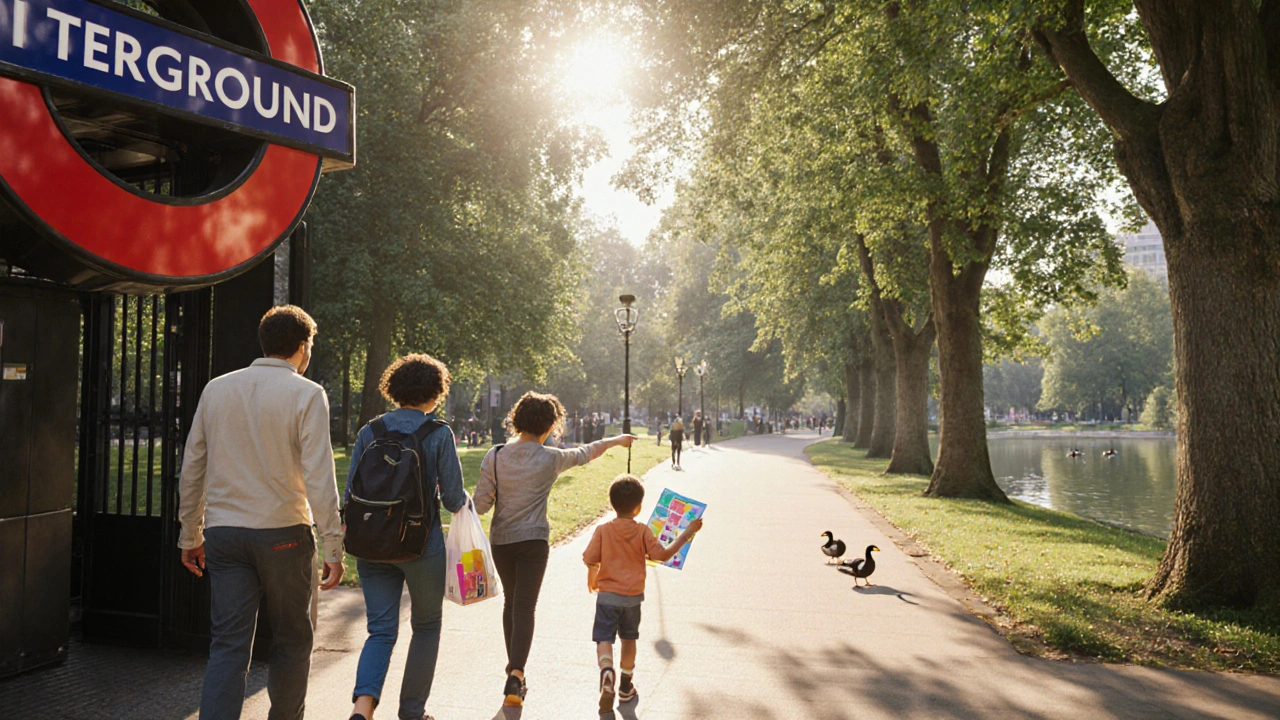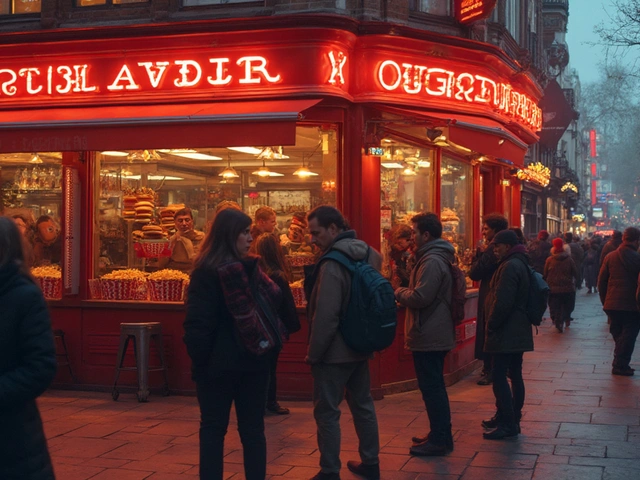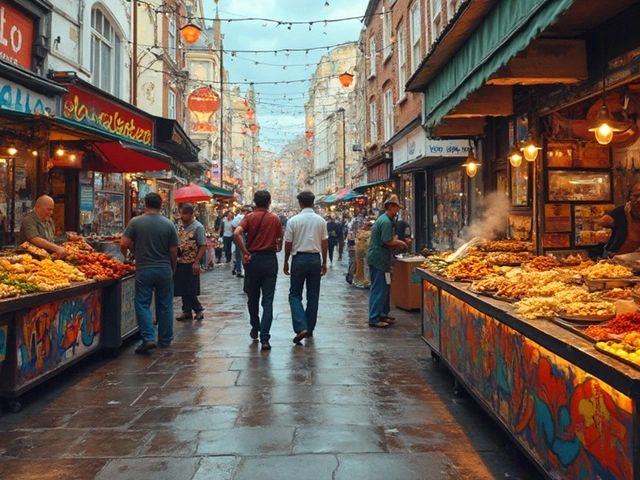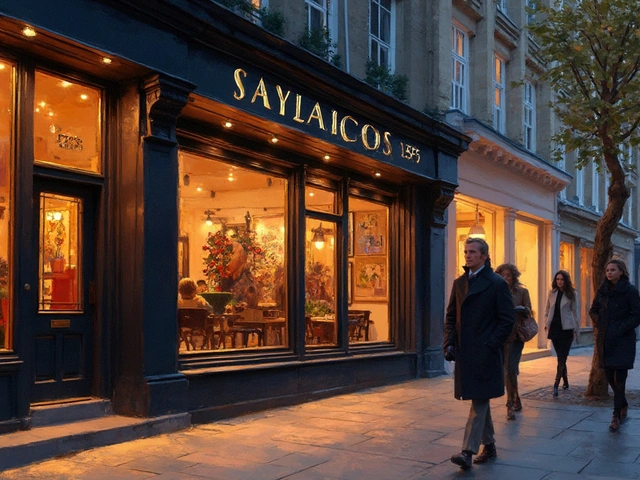
Living in London is a daily reminder that excitement can be found around every corner. Whether you’re juggling a morning commute or winding down after work, there’s a way to sprinkle a bit of magic into the routine without breaking the bank. Below you’ll discover how to turn ordinary days into memorable family moments using family-friendly activities in London that suit all ages, budgets, and weather conditions.
Key Takeaways
- Use local parks and museums for low‑cost, educational outings.
- Mix indoor and outdoor ideas to stay flexible year‑round.
- Leverage public transport passes for seamless family travel.
- Plan around seasonal markets and free events to keep the calendar fresh.
- Create a simple weekly checklist to make spontaneity easy.
Turn Everyday Moments Into Mini‑Adventures
Start by re‑imagining daily routes. A walk from the tube station to work can become a treasure hunt in Hyde Park. The park’s Serpentine Lake, playgrounds, and free yoga classes provide instant variety. Bring a sketchbook for the kids to doodle the ducks, or use a simple app to identify tree species-turning a commute into a nature‑learning experience.
For families using the Underground, grab an Oyster card and explore a new line each week. The Jubilee line, for example, stops at Southbank Centre, where free BeatBox workshops pop up on weekends. These pop‑ups are perfect for a quick after‑school adventure without the need for extra tickets.
Explore London’s Green Gems
Battersea Park offers a historic boating lake, a small farm, and a dedicated kids’ playground near the Peace Pagoda. Pack a picnic and let the children feed the resident ducks while you unwind on the grass. In summer, the park hosts free outdoor cinema nights-just bring a blanket and popcorn.
Kid‑friendly walking trails like the Thames Path between Tower Bridge and the Greenwich Peninsula provide scenic river views and plenty of photo‑ops. Stop at the Greenwich Park for a quick climb up the hill to the Royal Observatory; the panoramic cityscape is a rewarding payoff for a short hike.
Museums and Culture Without the Price Tag
London’s museums are a treasure trove of free family experiences. The Natural History Museum runs a Kids’ Club every Saturday morning, where little explorers can dig for fossils, assemble dinosaur skeletons, and enjoy science‑themed crafts. Tip: arrive early to beat the crowds and grab a free activity pack at the information desk.
Just a short tube ride away, the Museum of London offers a “London for Kids” trail that guides families through interactive exhibits about the city’s history. The trail includes QR‑coded clues that lead to hidden gems like the Roman London wall replica-perfect for a tech‑savvy family.

River‑Side Fun and Iconic Views
A Thames River cruise doesn’t have to be a pricey tourist trap. Thames River Cruise operators such as City Cruises have weekly discount slots for families, especially on weekday afternoons. Bring along a deck of cards or a simple game of “I Spy” to keep the kids entertained while you soak in landmarks like the Tower of London and the London Eye.
If a boat ride isn’t on your agenda, walk along the South Bank’s promenade. The area features the London Eye base, where you can catch free street performances, puppet shows, and pop‑up ice‑cream stands. The view of the city from the eye’s perimeter is a photo favorite-no ticket needed for the skyline.
Theatrical Magic for Little Audiences
West End theatres often schedule matinee performances for children. Look for family‑friendly shows like “The Lion King” or “Matilda” at the West End Theatre. Many venues offer “Kids’ Night” discounts on Tuesdays, and you can combine the experience with a pre‑show dinner at nearby family‑oriented restaurants such as Wahaca’s South Bank location.
For a more interactive theatrical experience, check out the Drama Club at the Southbank Centre. They host weekly drama workshops where children can act out classic stories, build confidence, and meet other young creatives.
Seasonal Markets and Community Events
London’s calendar bursts with free or low‑cost seasonal events. Autumn brings the Southbank Centre Winter Market, where families can glide down a small ice‑rink and enjoy hot chocolate. Summer sees the Camden Market host family‑focused craft stalls and live music on weekends.
Don’t overlook neighborhood festivals like the Notting Hill Carnival or the Greenwich Summer Festival. These events offer free cultural performances, street food sampling, and guided tours that can be tailored for kids. Arrive early, bring a portable snack, and use the event’s official app to navigate family‑friendly zones.

Weekly Planning Checklist
| Day | Activity | Location | Cost |
|---|---|---|---|
| Monday | After‑work park walk & scavenger hunt | Hyde Park | Free |
| Wednesday | Kids’ Club workshop | Natural History Museum | Free (pre‑booked) |
| Friday | Thames river cruise (discount slot) | Thames River Cruise | £12 per person |
| Saturday | Outdoor cinema & picnic | Battersea Park | Free |
| Sunday | Matinee theatre | West End Theatre | Discounted tickets - £20 |
This table is a starting point-feel free to swap locations based on your family’s interests or the weather forecast. The key is to keep a rotating list so that every day feels a little special.
Tips for Maximising Fun on a Budget
- Invest in a family Oyster card; children under 11 travel free on buses and the Tube.
- Look for “Free Entry” days at museums-usually the first Sunday of each month.
- Download city‑wide event apps like Time Out London for last‑minute pop‑ups and flash discounts.
- Pack snacks from local supermarkets (e.g., Tesco or Sainsbury’s) to avoid pricey venue cafés.
- Use public libraries for free craft workshops and story‑time sessions, especially in boroughs like Camden and Kensington.
Frequently Asked Questions
What are the best free activities for kids in central London?
Central London offers several free options: the Science Gallery at the Royal Institution runs weekly experiments, the Tate Modern has a dedicated family studio, and the London Transport Museum offers free entry for children under 5.
How can I avoid crowds at popular attractions?
Visit early on weekdays, use the skip‑the‑line tickets for the London Eye, and explore lesser‑known spots like St. Dunstan in the East, a garden hidden among the skyscrapers.
Are there any cheap dinner spots suitable for families?
Chains like Wahaca and Pizza Pilgrims offer kids’ menus under £8. For a market vibe, try the food stalls at Borough Market, where you can sample pastries and share plates.
What seasonal events should families not miss?
In autumn, the London Halloween Parade offers costume workshops. Winter brings the Winter Wonderland in Hyde Park, and summer unites families at the Southbank Centre Summer Festival with free performances.
With a little planning and a dash of curiosity, you can transform any ordinary day into a memorable family adventure. London’s wealth of parks, museums, riverside walks, and community events means there’s always something fresh to explore-no matter the weather or your budget.
Comments (10)
- Kevin Kuniyoshi
- October 14, 2025 AT 13:48 PM
While the author extols the virtues of quotidian urban exploration, one must acknowledge the underlying logistical paradigm that governs metropolitan mobility. The recommendation to leverage Oyster cards, albeit pragmatic, tacitly assumes a homogenous socioeconomic substrate across disparate boroughs. Moreover, the invitation to “sprinkle a bit of magic” is semantically nebulous, thereby obfuscating actionable directives. The proposed itineraries, ranging from Hyde Park’s serpentine promenade to Thames River cruises, ostensibly constitute a synergistic matrix of low‑cost leisure activities. Nonetheless, the omission of temporal elasticity-particularly peak commuter windows-could engender unanticipated opportunity costs. From a fiscal perspective, the suggestion to allocate £12 per person for riverine excursions, while modest, remains nontrivial for families operating under austere budgets. The inclusion of free museum access is commendable; however, the reliance on “first Sunday of the month” entry policies presupposes a static calendar devoid of ad‑hoc closures. In addition, the advisory to “pack snacks from local supermarkets” fails to account for dietary restrictions that may necessitate specialized provisions. The narrative’s emphasis on spontaneous adventure, albeit appealing, lacks a deterministic framework for risk mitigation in inclement weather scenarios. While the weekly checklist introduces a semblance of structure, its binary cost classification neglects ancillary expenses such as transportation fares beyond the Oyster cap. Consequently, the reader is presented with a dichotomous construct: either embrace the curated itinerary in its entirety or forfeit the purported communal enrichment. It is incumbent upon the practitioner to interrogate these assumptions, calibrate expectations, and synthesize a personalized schema that aligns with both temporal and fiscal constraints. In sum, the exposition provides a fertile ground for exploratory praxis, yet it mandates a critical appraisal of its implicit premises before operationalization.
- Aarushi Das
- October 16, 2025 AT 01:13 AM
The post, while well‑intentioned, neglects to emphasize that “free” activities often entail hidden costs, such as travel time and ancillary expenditures, which must be transparently disclosed. Additionally, the assertion that children under 11 travel free on buses and the Tube is technically accurate only when accompanied by a fare‑paying adult, a nuance the author omits. The recommendation to “arrive early to beat the crowds,” though sensible, should be supported by empirical data rather than anecdotal conjecture. Moreover, the omission of accessible facilities for neurodivergent families undermines the inclusive premise purported by the article. It would be prudent to incorporate statutory guidelines from the Equality Act to substantiate claims of universal accessibility. Finally, the suggestion to “pack snacks” must be contextualized within dietary restrictions and potential allergen concerns, lest readers be misled.
- Aaron Brill
- October 17, 2025 AT 11:56 AM
Sure, because everyone has a spare £12 for a river cruise after paying rent.
- Daron Noel
- October 18, 2025 AT 22:40 PM
Honestly, the whole “budget‑friendly” angle feels overrated; why not just enjoy the city’s free street art and park benches without turning every outing into a checklist?
- Vinny Cuvo
- October 20, 2025 AT 09:23 AM
Look, u think u kno all dis stuff but u r just spoutin nonsense-free stuff isn’t free when u got kids that need wif, and these “tips” are just a lazy way to sell u more crap.
Stop pretending u’re an expert, u’re not.
- Jaco Steenberg
- October 21, 2025 AT 20:06 PM
Wow, what a fantastic compilation of ideas!; London truly offers endless possibilities for family fun, and the suggestions here capture that spirit beautifully,; from park picnics to museum workshops, every activity invites laughter and learning,; remember to keep an eye on the weather forecast-rain or shine, there’s always an indoor alternative waiting to be discovered,; and don’t forget to celebrate the small moments, like spotting a duck in Hyde Park or sharing a cornetto on the South Bank,; these experiences build cherished memories that last a lifetime!
- sooraj Yadav
- October 23, 2025 AT 06:50 AM
All of this is great, but let’s not forget that London’s true charm comes from its British heritage 🇬🇧❤️-nothing beats a proper spot of tea after a day at the park! ☕️😊
- Amanda Vella
- October 24, 2025 AT 17:33 PM
It’s disheartening to see such a focus on consumerism masquerading as family bonding; genuine connection should not be commodified.
- Jade Sun
- October 26, 2025 AT 03:16 AM
I hear your concern, and while it’s important to stay mindful of commercialization, the activities listed can also foster togetherness without excessive spending.
- Utkarsh Singh
- October 27, 2025 AT 14:00 PM
The article contains several grammatical oversights; for example, “a small hike” should be preceded by “the” to maintain proper article usage.





